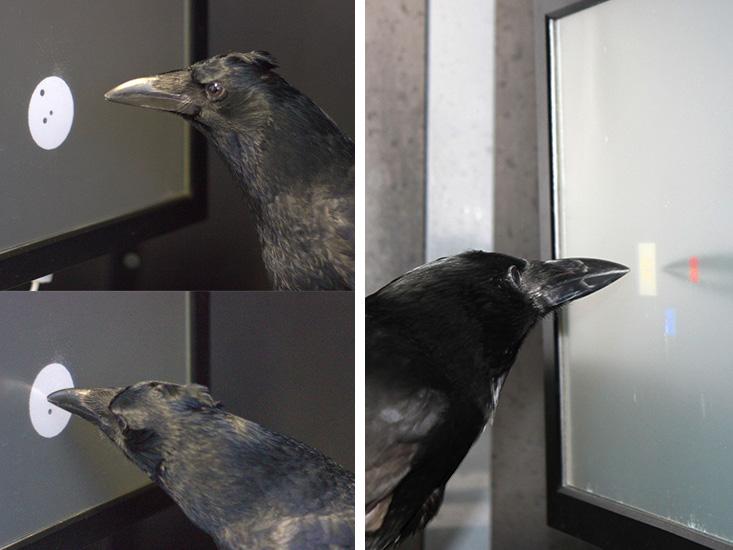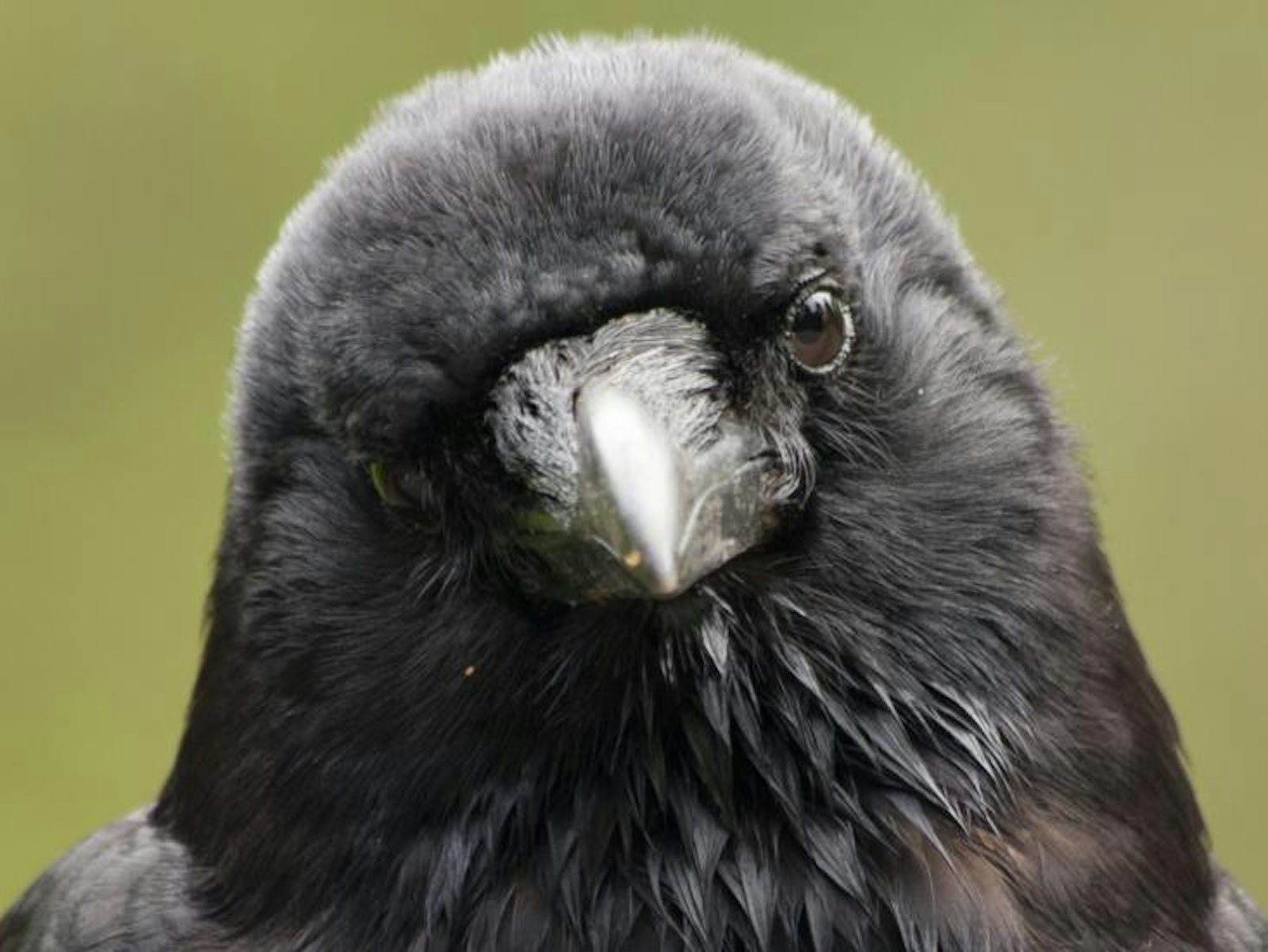The animals of neuroscience research are an eclectic bunch, and for good reason. Different model organisms—like zebra fish larvae, C. elegans worms, fruit flies, and mice—give researchers the opportunity to answer specific questions. The first two, for example, have transparent bodies, which let scientists easily peer into their brains; the last two have eminently tweakable genomes, which allow scientists to isolate the effects of specific genes. For cognition studies, researchers have relied largely on primates and, more recently, rats, which I use in my own work. But the time is ripe for this exclusive club of research animals to accept a new, avian member: the corvid family.
Corvids, such as crows, ravens and magpies, are among the most intelligent birds on the planet—the list of their cognitive achievements goes on and on—yet neuroscientists have not scrutinized their brains for one simple reason: They don’t have a neocortex. The obsession with the neocortex in neuroscience research is not unwarranted; what’s unwarranted is the notion that the neocortex alone is responsible for sophisticated cognition. Because birds lack this structure—the most recently evolved portion of the mammalian brain, crucial to human intelligence—neuroscientists have largely and unfortunately neglected the neural basis of corvid intelligence.
Both crows and primates evolved to use the same computation, albeit through radically different machinery.
This makes them miss an opportunity for an important insight. Having diverged from mammals more than 300 million years ago, avian brains have had plenty of time to develop along remarkably different lines (instead of a cortex with its six layers of neatly arranged neurons, birds evolved groups of neurons densely packed into clusters called nuclei). So, any computational similarities between corvid and primate brains—which are so different neurally—would indicate the development of common solutions to shared evolutionary problems, like creating and storing memories, or learning from experience. If neuroscientists want to know how brains produce intelligence, looking solely at the neocortex won’t cut it; they must study how corvid brains achieve the same clever behaviors that we see in ourselves and other mammals.
While there have been a number of fascinating behavioral studies in corvids (especially from the lab of Nicola Clayton at the University of Cambridge) so far only Andreas Nieder, a neuroscientist at the University of Tübingen, has examined the neuronal activity of crows during sophisticated behavior. In Nieder’s first of such studies, published in 2013 in Nature Communications, he and graduate student Lena Veit wanted to see what crows’ brains did when following an abstract rule.
In their experiment, Nieder’s team had the crows play an image matching game. The crows first had to briefly look at a sample image on a computer screen. Then, a cue indicated whether they should subsequently select the same (matching) image, or a different one, once the computer screen lit up again. Importantly, the cues for which image to select could be either visual (in this case, red or blue circles) or auditory (noise or glissando sound). The blue circle or glissando sound cued the crow to select the same image as appeared initially; the red circle or noise sound cued the different one. This required the crows to interpret the cue flexibly, since a sound or a visual could cue the same action.
Once the birds learned the rule (they were rewarded with treats when behaving correctly), Nieder’s team began recording neuronal activity in the birds’ nucleus NCL (nidopallium caudolaterale), an area of the avian brain thought to be most like the mammalian prefrontal cortex (PFC), which enables decision-making, short-term memory, and planning for the future. (Eight microelectrodes were implanted in the birds’ brains during surgery.)
Examining the activity of over 300 neurons in two birds, Nieder’s team found that the crow’s NCL activity matched that of a primate’s prefrontal cortex: Both of the species’ neurons activated the most during the presentation of the rule cue, while activating much less in response to the images themselves. Some neurons responded specifically to the match cue (blue circle or glissando) and others to the non-match (red circle or noise); importantly, the neurons from each species activated in the same fashion regardless of the cue’s sensory modality (auditory or visual). Nieder’s results imply that both crows and primates evolved to use the same computation, albeit through radically different machinery, to solve the problem of representing abstract information—in this case, auditory or visual rules to a game.

In another study, Nieder and graduate student Helen Ditz looked at crows’ ability to remember quantities, or numerosity, and whether neuronal activity in their NCL reflected the number of objects in a viewed image. They hypothesized that this area would be involved in perceiving quantity because, in primates, the PFC signals quantity when monkeys perform a numerosity task. The researchers showed the birds images that contained anywhere from 1 to 5 dots, the size and position of which were different each time so as to control for memory. First, they displayed a sample image and then, after a brief delay, a test image. If the test had the same number of dots as the sample, the crows had to peck at the screen. If it did not, they were to do nothing at all until the next trial.
Regardless of the dots’ size and position, their quantity got encoded: Specific NCL neurons reacted to specific numbers, and activity in the NCL reflected the crows’ behavior. The birds made more mistakes, for example, when comparing neighboring numbers, especially when the numbers were large (for instance, 4 versus 5). This could potentially be explained by the pattern of neural activity Nieder saw in the NCL: Neurons that reacted strongly to higher numbers were also more likely to be activated by neighboring numbers than those that reacted to small numbers. Perhaps most intriguingly, the same behavioral and neural results were previously found in the primate PFC. That suggests that radically different brains may also have the same neural basis for the difficulty they each have in distinguishing large quantities.
If, as Nieder told me, “the codes in the avian NCL and the mammalian PFC are the same, it suggests that there is one best neuronal solution to a common functional problem”—be it counting or abstract reasoning. What’s fascinating is that these common computations come from such different machinery. One explanation for this evolutionary convergence could be that—beyond some basic requirements in processing—the manner in which neurons are connected does not make much difference: Perhaps different wiring in the NCL and PFC still somehow leads to the same neural dynamics.
The next step in corvid neuroscience would be to uncover exactly how neurons arrive at solutions to computational challenges. Finding out how common solutions come from different hardware may very well be the key to understanding how neurons, in any organism, give rise to intelligence.
Grigori Guitchounts is a neuroscientist, AI researcher, and an associate at Flagship Pioneering working on venture creation in AI and machine learning.






























